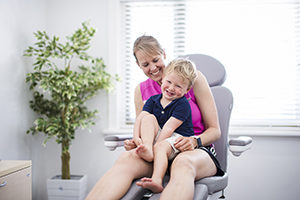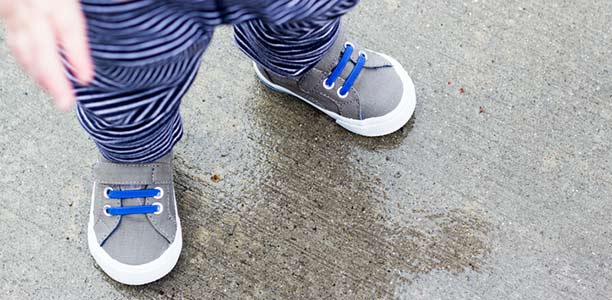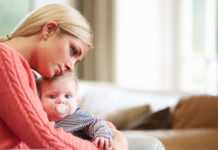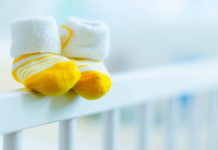Podiatrist Dr Samuel Ong (B. Pod. Med.) is the founder and principal podiatrist of Mustard Seed Podiatry.
How can baby shoes or toddler shoes affect the development of a toddler’s feet?
Footwear can play a big part in affecting the development of a toddler’s feet. When a baby is born, their feet are made up of mainly cartilage and fat. As they grow, the cartilage will start ossifying to become bones. Poor fit and shape of baby shoes can cause malalignment of joints, restrict normal growth of the feet, and limit natural movement of foot joints.
What features should you look for in toddler shoes?
Once your toddler starts walking, shoes are only required to protect their feet against sharp objects, dirt and slippery surfaces while outdoors. Fancy features are not required in the shoes.
Good cushioning is key. The best shoes for toddlers are soft and flexible to make room for natural movement of their feet, which helps kids strengthen their foot muscles and develop a normal gait. Good cushioning provides shock absorption and protection against sharp objects on the ground.
Avoid materials that are stiff and need breaking in. Go for rubber soles with ridges as they are slip-resistant and provide good traction. Flexibility in the shoes gives toddlers a better grip and feel of the ground which helps to train their small foot muscles, develop better motor control and balance.
Look for toddler shoes with good ventilation to keep their feet cool. Soft leather or cloth is best as they are both soft and breathable. Avoid synthetics and plastics as they don’t breathe.
Some sort of securing mechanism, such as Velcro straps, is ideal as it helps the shoes to stay on their feet and reduce the chance of them tripping over loose shoes. Make sure the shoes are lightweight to minimise the effort required for your child to walk.
Open-toed shoes, flip flops and Crocs are not ideal shoes for toddlers because of their instability; they also encourage toe-gripping which may lead to toe deformities.
What issues are there with toddlers wearing shoes that are not the right size?
 Shoes that are too big will cause their feet to move excessively in their shoes. The rubbing of the shoe against their skin can cause blisters, which can lead to infection if the blister is not treated correctly. Shoes that are too big are not comfortable for your toddler, and can be difficult to walk in. This will increase the risk of them tripping. Shoes that are too big also cause instability which means your toddler’s toes will often ‘grip’ the shoes. This can lead to toe deformities such as hammer toes, claw toes and bunions. By contrast, shoes that are too small will restrict the growth of their feet. This may alter the shape of their feet and cause toe deformities and ingrown toenails.
Shoes that are too big will cause their feet to move excessively in their shoes. The rubbing of the shoe against their skin can cause blisters, which can lead to infection if the blister is not treated correctly. Shoes that are too big are not comfortable for your toddler, and can be difficult to walk in. This will increase the risk of them tripping. Shoes that are too big also cause instability which means your toddler’s toes will often ‘grip’ the shoes. This can lead to toe deformities such as hammer toes, claw toes and bunions. By contrast, shoes that are too small will restrict the growth of their feet. This may alter the shape of their feet and cause toe deformities and ingrown toenails.
How can parents tell if footwear fits their toddlers correctly?
When checking the length of kids shoes, ask your child to stand on their feet, with their knees slightly bent. With their feet sitting as far forward in the shoe as possible, there should be a pinky-width (theirs) between the heel and the back of the shoe. With their feet sitting as far back in the shoe as possible, there should be a thumb-width (theirs) between the end of their longest toe and the front of the shoe.
Make sure the shoes have just enough room for free movement of their feet. Their shoes should never be loose, as loose shoes increase instability. The motor control of toddlers is not as advanced as a bigger child’s. Loose shoes will make it harder for them to balance and navigate their way.
At this age when feet are growing rapidly, how often should parents check the size of their children’s feet?
I would suggest a monthly check on the shoe size as they are rapidly growing during this time. Their foot size can double by the time they reach the age of 4! If in doubt regarding the best shoes for your toddler, see a podiatrist to get the right advice and have them fitted properly.
Should toddlers wear socks with their shoes?
As a general rule, everyone should wear socks with their shoes, including toddlers. Wearing socks helps to absorb excess moisture, reduce friction and damage to their skin. It will also make wearing shoes more comfortable for them. When it comes to socks, make sure they are properly fitted, as tight socks can restrict circulation and growth of the feet.
How often should toddlers wear no shoes or go barefoot?

For toddlers, it is beneficial for them to be barefoot most of the time. Going barefoot allows them to have a better feel of the ground, which helps to develop their proprioception and motor skills. It also helps to strengthen their leg and foot muscles.
When indoors and in a protected environment, toddlers should be allowed to go barefoot. When outdoors, where the environment is unpredictable, dirty and potentially dangerous, then toddlers are encouraged to be in shoes so their feet stay protected.
When a toddler first starts walking, their balance is not as good. It is important to allow their balance to develop and improve before placing a pair of shoes on their feet. Check to see if their hands are down by their sides, and their eyes are looking forward while they are walking. If their eyes are looking down, or if their hands are in the air while they are walking, this is a sign that their balance is not good enough for them to walk confidently. Placing a pair of shoes on their feet in this situation could lead to greater frequency of falls, or discourage them from walking all together.
Can you offer some tips to parents whose toddlers like to remove their shoes, about things they can do to encourage their kids to keep their shoes on?
If they are not walking, there is no need to force them to keep their shoes on. When footwear is required, make sure the shoes are not making their feet too hot. Hot feet can cause discomfort, making
them resistant to keeping their shoes on. Wearing socks can help as they absorb sweat from the feet.
If your children are always removing their shoes, it can also be a sign that the shoes are ill-fitting or uncomfortable. Make sure you get your children’s feet and shoes checked out by a podiatrist!
What can parents do to encourage their toddler to wear footwear that is good for their feet?
Children model their parents’ every single behaviour. This is why it is important for parents themselves to wear good footwear and model that behaviour to their children.
Taking kids shoe shopping can also encourage children to wear shoes. By getting them involved, children feel a sense of ownership over the decision they have made, and are more likely to be
compliant with wearing those shoes.
What tips can you offer parents whose toddler wants to wear sparkly/fashionable shoes that are not good for their feet?
 Firstly, the easiest thing to do is to not buy those shoes in the first place. But if the shoes are already bought, throw them away or hide them in a place where it is not always in view of your children, and they will forget about it eventually.
Firstly, the easiest thing to do is to not buy those shoes in the first place. But if the shoes are already bought, throw them away or hide them in a place where it is not always in view of your children, and they will forget about it eventually.
As mentioned before, it is very important to model the behaviour that parents want to instil in their children. As much as possible, parents should be disciplined in wearing the type of footwear that they want their children to wear.
I also believe education is key, and kids are never too young to learn. Parents should educate their children on the importance of having good foot health, and the role that footwear plays in it.
If all else fails, let them know that those are special shoes for special occasions. Choose a special occasion with your children (birthday, wedding, etc.), and let them know that they will have to wait until then before they can wear those special shoes.
Is it very common for parents to keep their children’s old shoes and pass them down to other siblings or give to others? Should parents do this?
It is not too common, but it does happen. Children wear out their shoes very quickly because they are usually very active. In general, parents shouldn’t pass their children’s shoes down. However, an exception may be made if the shoes are still in excellent condition and the parents are absolutely sure that it fits correctly. If the older child has any fungal skin infections or warts, parents risk cross-infecting their younger child with these conditions if they pass down shoes.
What are some tips on how parents can cope with the cost burden for buying new shoes for children as their feet grow so quickly?
What parents can save on clothing, they can spend on footwear for their children. Second-hand and hand-me-down clothes are perfectly fine for clothing, whereas ill-fitting or worn out footwear can cause long-term damage to their feet. Parents can buy one pair of good shoes, as opposed to many pairs of poor quality shoes. It is important to think about where the child spends most of their time, other than at home. This is school, and so parents should by the best school shoes they can. Ideally, this would be a runner as they are the best constructed shoes. It is important to encourage children to wear good shoes from a young age. This will encourage them to make good decisions as they get older.
Summary
- Toddlers’ feet are growing rapidly and good quality shoes are required to provide support, comfort and prevent restriction of growth and malalignment of joints
- Toddler shoes should be flexible, have good cushioning and ventilation and consist of a securing mechanism such as Velcro
- Toddlers should be encouraged to walk barefoot indoors in order to help develop their balance
- Toddlers should not wear shoes that are fashionable but not good for their feet, one good, quality pair of shoes will suffice




 (16 votes, average: 3.38 out of 5)
(16 votes, average: 3.38 out of 5) 






